Environmental Integration on ...
Online Conference
10 Apr 2025 / 12 Apr 2025 read more
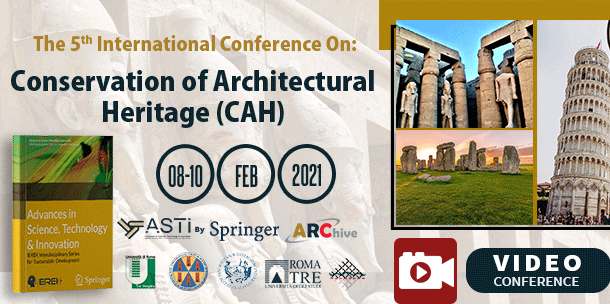
Faculty of Engineering and Architecture, University of Enna "KORE", Italy.
Subscribe to our newsletter
With the world’s fast-changing pace, the need to preserve memories of its past lives has grown exponentially. With the conservation of architectural heritage, which is the process of restoring, conserving, and managing changes of a heritage site in a manner that sustains and enhances its significance, the possibility of restoring buildings rather than replacing them, is heightened, for the sake of this preservation.
The benefits of such preservation aren’t only represented in the cultural worth of the landmark or the sense of identity and continuity it provides, but also the tangible economic return it generates, through tourism, to its surrounding community.
Conserving architectural heritage alleviates the economic pressures imposed upon surrounding property and business owners and the community as a whole, by reusing existing fabric with fewer materials, providing opportunities for the use of the labor force, and increasing property value for the building itself and its neighboring. It also reduces environmental pressures since conservation utilizes less than half of the energy used in the construction of new buildings whilst reducing construction waste.
With the aim of further thrusting forward this field, IEREK is organizing its 5th international conference on Conservation of Architectural Heritage (CAH), which will be held online, to host academics from around the world interested in discussing the latest research in cultural heritage protection and the different technological developments and methodologies that have been discovered, as well as the potential of architectural heritage conservation in acting as a catalyst for regeneration in areas like tourism and economic development, making this a great opportunity for planners, engineers and environmentalists to work together and help conserve the architecture and heritage of the cities of the world.
So, how can participating in CAH international Video Conference boost your career, future potentials, and experience?
All of these and much more are benefits of participation in the CAH international video conference.
1.1 History of Architectural Conservation
1.2 Utopian and Sacred Architecture
1.3 Nomad's Architecture and Desert Communities
1.4 Governance, Partnerships, and Communities of Practice
1.5 Awareness of Heritage Rehabilitation Projects
2.1 Understanding the Significance of Cultural Heritage Conservation
2.2 Ways to Conserve the Architectural Heritage
2.3 Conserving the City's Tradition and Identity through the Protection of the Architectural Heritage
2.4 Effects of Architectural Heritage Conservation on Tourism Development and Urban Preservation
2.5 Socio-economics Impact and Environmental Benefits of Heritage Conservation
3.1 Protecting Architecture Ethnic Groups
3.2 Conservation of Cultural Memories through Interior Designs
3.3 Principles of Conservation of Archaeological Sites
3.4 Conservation and Development of Heritage Landscape Planning
3.5 Ecosystem Management and Conservation Strategies
4.1 Impact of Conservation of Architectural Heritage on the Environmental Protection
4.2 Materials Used in the Protection of the Heritage Sites
4.3 Challenges of Conserving the Architectural Heritage
4.4 Passing down Cultural Heritage and Identities to the Future Generations
4.5 Best Practices in Assessment, Designating, and Managing World Heritage
5.1 Mapping archeological sites using Geographic Information System (GIS)
5.2 using remote sensing to monitor the changes in Heritage sites.
5-3 Using ultra-sounds and other rays in age building treatments through the process of rehabilitation
5.4 new materials and methods of cracks treatments
5.5 international case studies used technologies in conserving heritage buildings and sites.
| Title | Date |
|---|---|
| Abstract Submissions Deadline | 30 Nov 2020 |
| Last Notification for Abstract Acceptance | 10 Dec 2020 |
| Full Paper Submission Deadline | 15 Jan 2021 |
| Last Notification for Full-Paper Acceptance | 25 Jan 2021 |
| Early Payment Deadline | 15 Jan 2021 |
| Regular Payment Deadline | 15 Jan 2021 |
| Late Payment Deadline | 08 Feb 2021 |
| Letter of Visa (for delegates who need visa entry) | 10 Dec 2020 |
| Letter of Final Acceptance | 15 Jan 2021 |
| Conference Program | 09 Jan 2021 |
| Conference Launch | 08 Feb 2021 |

Degree in Building Engineering (University of Messina, Italy) and a Ph.D. in Architecture (University of Paris VIII, France). After being UNESCO international staff member, in charge of numerous cultural projects in South-Eastern Europe until 2008,
she is currently a researcher and an assistant professor at the Faculty of Engineering and Architecture of the University of Enna “KORE” and associate researcher at Ipraus (Paris Research Institute: Architecture, Urbanism, Society), Paris-Belleville National School of Architecture.
Since 2013, she is a member of SIRA, the Italian Society of Architectural Restoration. In 2018, she obtained the habitation as Associate Professor according to the Italian National Scientific Qualification procedure.

Dr. Eiman Elgewely is an Assistant professor of Interior Design in the School of Architecture + Design at Virginia Tech. Both her MFA and Ph.D. from Alexandria University are in the field of Virtual and Cyberspace design. Dr. Elgewely has joined the Experiential Technologies Center, School of Art and Architecture, University of California Los Angeles (UCLA) in 2013 as a Fulbright Postdoctoral fellow. Her research interests are in the field of Digital Cultural Heritage and museum studies. She has worked on several applied projects in Digital Cultural Heritage in Egypt since 2007, including 3D scanning, documentation, and virtual reconstruction of historical sites in collaboration with the City of Scientific Research & Technological Applications, Alexandria, Egypt. Before joining the faculty at Virginia Tech University, Dr. Elgewely was Assistant Professor of Interior Architecture at the Faculty of Fine Arts, Alexandria University, then the coordinator of the Interior Design Program at the Arts & Design Department, Applied Science University of Bahrain (ASU).
Important Note:
IEREK has an unyielding policy regarding plagiarism. We believe that copying/taking the ideas and work of other Authors without permission and credit is fraudulent.
The Reviewing committee and IEREK employees have the authority to reject a paper during its reviewing process, on the basis of the paper being subjected to either minor or major plagiarism.
Duplicating any content will lead to the paper’s refusal upon the complaint of the plagiarism victim.
Authors are respectfully requested to abide by the following steps/instructions in order to participate in the international conference "Conservation of Architectural Heritage (CAH)– 5th Edition" and get their papers published...
Step 1: Abstract Submission
- The author (researcher) should submit an abstract file (paper summary) through our online system before the abstract submission deadline.
- Submitted abstract should not exceed 300 words.
- Submitted abstract should include the main keywords of the research (3-5 keywords).
- The abstract should clearly state the purpose, results, and conclusions of the work to be described in the final paper.
- The author should select the most relevant topic for the paper from the corresponding conference topics.
- The abstract file should be blind (DON'T include author(s) information).
- The author can use/download an abstract writing template to submit the abstract file accordingly.
To download Abstract Writing Template, Click Here
Step 2: Abstract Review
- Once the abstract is submitted abiding the mentioned instructions, it will be sent to undergo the revision process by members of our scientific committee.
- The criteria for accepting abstracts for the conference are: A relevant topic of the conference should be proposed with clear writing, aims, and objectives of the study clearly presented, as well as a sound literature and methodology of the work.
- The author will receive abstract feedback and next step action by email within 2 weeks maximum from abstract submission date.
- If the scientific committee's feedback states that the abstract is accepted, the author will receive abstract acceptance notification by email stating that the abstract is accepted and to proceed with full/short paper submission.
Step 3: Paper Submission
There are 2 types of paper submission at this conference:
Short Paper:
- The structure of a short paper should contain its abstract, keywords, introduction, problem statements and the hypothetical solution along with further studies that they will go through when they want to extend their paper to be published online.
- A short paper is only published in the conference proceedings book and will not have a chance to be published online by Springer or by IEREK’s Journals unless the author extends their work to a full-length paper and pay the corresponding fee.
Full/Long Paper:
- The full paper should state the major issue(s) addressed, the potential significance of the work, the theoretical and methodological approach(es) pursued, major findings, conclusions, implications, and relevant scholarly references.
- A full/long paper will get published in the conference proceedings book as well as published online by Springer or by IEREK’s Journals.
- The author should submit the full/short paper written on the writing template, through our online system before the paper submission deadline.
To download Paper Writing Template, Click Here
- The full/short paper should be written in English as it's the official language of the conference.
Step 4: Paper Elementary Review
- Once the full/short paper is submitted abiding the mentioned instructions, it is assigned for review by the reviewers of the scientific committee in aligning with IEREK revision SOP (double-blind process).
- The author will receive paper feedback and next step action by email within a 1-month maximum from paper submission date.
Step 5: Payment
- Once the paper gets accepted, the author will be informed to pay the conference fees so that it could be sent to another 2 members of the scientific committee in order to provide the author with comments/notes that could improve the paper and push it to the limits.
- As soon as payment is confirmed and done successfully, corresponding official documents can be issued from our end such as paper acceptance letter and invitation letter.
Step 6: Paper Final Review
- The paper will be sent for review by another 2 members of the scientific committee in aligning with IEREK revision SOP (double-blind process). Reviewers' comments/notes will be forwarded to the author in order to modify the full paper accordingly. Then, send us the final version of the paper.
All accepted papers of the Conservation of Architectural Heritage (5th CAH) after the peer-review process will be either published as chapters in the Book Series “Advances in Science, Technology and Innovation” (ASTI) by Springer or in The International Journal of Academic Research Community Publication (ARChive) online by IEREK Press.

The ASTI Book Series by Springer is by highly professional members of an International Editorial Board to ensure a high-quality publication material to be eventually published online and printable.
The ASTI Book Series is indexed Scopus and will be submitted for indexation in Web of Science (ISI) and EI-Compendex databases.
To publish your research in the online Journal or Book by 'Springer' and provide it with world-wide visibility, authors must submit an extended version of their short papers that are 8 -12 pages long.
If you are not sure whether you or one of your co-authors will be able to attend the conference, you should bear in mind that there is a fee to be paid for Audiences (Co-authors, Learners, and Interests). The accepted paper will not be included in the conference proceedings without paying the fee (see Conference Fees for more details). A research paper fee allows only one author, whether main or co-author, to attend the conference and receive only one copy of the conference proceedings book in both hard and soft copies. Extras can be requested for a fee shown below.
For IEREK's Previous Publications, Please Click here
- Conservation of Architectural Heritage (CAH) held on a Nile cruise from Luxor to Aswan in November 2015.

- Conservation of Architectural Heritage (CAH) -2nd Edition held on a Nile cruise from Aswan to Luxor in February 2018.


- Conservation of Architectural Heritage (CAH) -3rd Edition held at the Nubian Museum, Aswan in February 2019.


Advances in Science, Technology and Innovation Book Series
IEREK Series for Interdisciplinary Studies
Springer:
- On 10 May 1842 (his 25th birthday), Julius Springer founded his bookstore and publishing house in Berlin, laying the foundation for today’s company.
- After 175 dynamic years, the name Springer stands for a globally active publisher dedicated to the advancement of science, putting its authors and editors at the heart of the company’s publishing activities.
- Springer is a leading global scientific, technical and medical portfolio, providing researchers in academia, scientific institutions and corporate R&D departments with quality content through innovative information, products and services.
- Springer has one of the strongest STM and HSS eBook collections and archives, as well as a comprehensive range of hybrid and open access journals.
- Springer is part of Springer Nature, a global publisher that serves and supports the research community. Springer Nature aims to advance discovery by publishing robust and insightful science, supporting the development of new areas of research and making ideas and knowledge accessible around the world.
- As part of Springer Nature, Springer sits alongside other trusted brands like Nature Research, BioMed Central, and Palgrave Macmillan.
About the Series:
Advances in Science, Technology & Innovation (ASTI) is a series of peer-reviewed books based on the best studies on emerging research that redefines existing disciplinary boundaries in science, technology, and innovation (STI) in order to develop integrated concepts for sustainable development. The series is mainly based on the best research papers from various IEREK and other international conferences or direct submissions and is intended to promote the creation and development of viable solutions for a sustainable future and a positive societal transformation with the help of integrated and innovative science-based approaches. Offering interdisciplinary coverage, the series presents innovative approaches and highlights how they can best support both the economic and sustainable development for the welfare of all societies. In particular, the series includes conceptual and empirical contributions from different interrelated fields of science, technology, and innovation that focus on providing practical solutions to ensure food, water, and energy security. It also presents new case studies offering concrete examples of how to resolve sustainable urbanization and environmental issues. The series is addressed to professionals in research and teaching, consultancies and industry, and government and international organizations. Published in collaboration with Springer, the IEREK Interdisciplinary Series for Sustainable Development will acquaint readers with essential new studies in STI for sustainable development.
Publication
Publishing your paper with a reputable and renowned publisher is necessary to maintain the high quality standards of the scientific process along with retaining your copyright. It is even more advantageous to increase the exposure of your paper to the rest of the scientific community either online, offline, or in both versions.
All of the papers present in the book either belong to the best research papers in IEREK’s conferences or the authors’ direct submissions.Fees for direct submission: - The revision process: 200$ (nonrefundable)- Once the paper is accepted and approved: 200$.
Click on the below image to learn more about the editors
Instructions
- Each research paper should have one main author who should pay the full fee (Author fees) regardless of attendance.
- Each co-author (1-5 max) has his/her own separate fees to pay as shown in a table below.
- A research paper fee allows only one author, whether main or co-author, to attend the conference and receive only one copy of the conference proceedings book in both hard and soft copies. Extras can be requested for a fee shown below.
Loyalty Membership Discounts
The more you attend, the more you're rewarded!
IEREK offers its loyal participants with the following discounts depending on his/her attendance:
|
Attendance |
Second |
Third |
Fourth |
Fifth |
|
Discount |
5% |
10% |
15% |
20% |
*The aforementioned discounts are only applicable during Regular and Late Payment times. For more information, please refer to 'Important Dates'.
Conference Fees:
|
Online Conference attendance Held online from the comfort of your own home, the fees below guarantee your virtual attendance for all days of the conference date above |
|
|
Author fees |
EUR 250 |
|
Co-Author Fees |
EUR 50 |
|
Audience Fees |
EUR 50 |
|
Extra Fees *Authors may request that their kits be delivered, for an additional fee decided by the courier, and upon request. Alternatively, authors located in Egypt can pick them up from Cairo/ Alexandria office. |
|
|
Shipping Conference Abstract book and certificate |
Depending on Location |
|
Additional Conference Kit (Excluding Delivery) |
EUR 100 |
Delegates in any event who cancel their registration due to special circumstances will receive refunds according to the following:
| Cancellation Policy | Up to 60 days before the event | 59 days before the event |
| Penalty | 20% | 100% |
Participating in conferences is very beneficial, especially, on the professional level; conferences are full of people promoting new ideas which will expand your knowledge and undoubtedly help your career.
The International Conference on Conservation of Architectural Heritage was held aboard the Grand Palm Nile Cruise, for 5 days, which had sightseeing trips for the historical, cultural, and architectural sites. As well as holding of the “Folk Art Gallery” by Amr Bayoumi & Ola Bayoumi. The conference was chaired by Professor Douglas C. Comer (the Co- president of ICAHM for ICOMOS.) and organized by IEREK.
The opening session was held onboard the Nile cruise right after the arrival of the delegates and the visit of Luxor temple, which was opened by a welcoming word from the CEO of IEREK. It was then followed by Prof. Douglas C. Comer (the Co- president of ICAHM for ICOMOS.), Prof. Ahmed Rashed (former head of Architecture Department at the British University in Egypt, and the founding director of (CSFS)), Prof. Antonella Versace (Professor at University Kore of Enna, Italy), and finally Mr. Mohamed Badr (Governor of Luxor).
After an introduction about the conference and its delegates was made, the conference officially started with the sessions.
The plenary session titled “Development and Promotion of the Architectural Heritage through Tourism Forms” was run by the following professors:
– Prof. Douglas Comer (Principal, Cultural Site Research and Management, Inc. “CSRM” & Conference Chairman)
-Prof. Antonella Versaci (Kore University of Enna, Italy & Scientific Coordinator of the Conference)
-Prof. Ahmed Rashed (British University in Egypt “BUE”)
-Dr. Monica Hanna (American University in Cairo “AUC”, Egypt)
-Dr. Mohammed Assem Hanafy (University of Alexandria, Egypt)
-Hamdy Elsetouhy (Researcher and Specialist in Conservation)
The first day included a guided tour to Luxor temple. Later there was an optional trip to the light and sound show at Karnak Temple.
On the second day, the delegates moved to the west bank of Luxor to visit the Colossi of Memnon, Hatshepsut’s Temple, as well as an Alabaster factory and bought some alabaster-made souvenirs. Later, there was an optional trip to the Valley of the Kings.
The third day included a visit to Edfu temple in Edfu city, followed later by a visit to Kom Ombo temple when the Nile Cruise reached the city of Kom Ombo. The fourth and last day was spent in Aswan where visits were made to the High Dam, a modern-age site, followed by a visit using motor boats to Philae Temple on Agilkia Island. Following that, the attendees were given the option to visit the botanical island and a Nubian village.
Check this conference’s overview here:
https://www.ierek.com/events/conservation-architectural-heritage-cah#overview
The 2nd International conference on the Conservation of Architectural Heritage in Egypt has been successfully held in Aswan: one of the most significant historical cities existing today.
This conference witnessed the attendance of planners, environmentalists, archeologists, architects, engineers, tourists, policy makers and stakeholders who are interested in the conservation of architectural heritage. Having been filled with participants from diversified fields, approximately 80 full paper submissions were received and 50 of them were presented over several sessions.
Authors attending came from different backgrounds and cultures to discuss research on the conservation of archaeological, architectural and urban landscapes, and multi-disciplinary research on complex Cultural Heritage sites. Held on a Nile Cruise that Sailed from Aswan to Luxor, the conference was attended by authors from Australia, Kuwait, Lebanon, Saudi Arabia, Greece, Egypt and more. With Professor Douglas C. Comer, an archaeologist and the co-president of the United States Committee for ICOMOS (US/ICOMOS), as the Chairperson of the conference, promising conclusions have been reached and recommendations made.
The first day included a guided tour to Luxor temple. Later there was an optional trip to the light and sound show at Karnak Temple.
On the second day, the delegates moved to the west bank of Luxor to visit the Colossi of Memnon, Hatshepsut’s Temple, as well as an Alabaster factory and bought some alabaster-made souvenirs. Later, there was an optional trip to the Valley of the Kings.
The third day included a visit to Edfu temple in Edfu city, followed later by a visit to Kom Ombo temple when the Nile Cruise reached the city of Kom Ombo. The fourth and last day was spent in Aswan where visits were made to the High Dam, a modern-age site, followed by a visit using motor boats to Philae Temple on Agilkia Island. Following that, the attendees were given the option to visit the botanical island and a Nubian village.
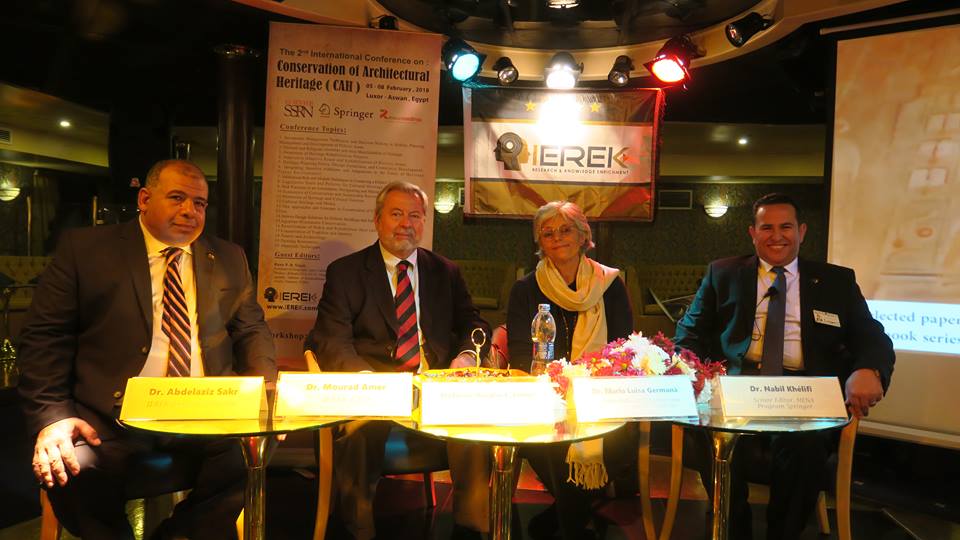
Check this conference’s overview here:
https://www.ierek.com/events/conservation-architectural-heritage-cah-2#overview
The 3rd International Conference on “Conservation of Architectural Heritage (CAH)” was held from on 19th to 22nd of February 2019 in association with Faculty of Engineering at Shoubra - Benha Unversity. The conference included many discussions, covered extremely important topics, and presented new scientific values in the scope of conserving the architectural heritage. For the third time, it was a very successful conference that cannot be forgotten.
The international conference was held in Aswan, Egypt, specifically at The Nubian Museum, which is considered to be a gateway to the history of Nubia and one of the most attractive touristic sites in Aswan.
This year, the conference was held under the patronage of Dr. Khaled Abdel Ghaffar (Minister of Higher Education and Scientific Research), Prof. Hussein El-Maghraby (President of Benha University), and The Supreme Council of Antiquities. It was also chaired by Prof. Ragab Megahed (Dean of Faculty of Engineering at Shoubra - Benha Unversity).
First Day: Opening Ceremony and Keynote Speeches
The opening ceremony started with greetings and short-introductions by:
Prof. Tarek Tawfik, General Director of the Grand Egyptian Museum
Prof. Ferdinando Trapani, Associate professor in Urban Planning, Università degli Studi di Palermo, Italy
Prof. Francesco Alberti, Associate professor of Urban planning and design at University of Florence, DIDA - Department of Architecture
Prof. Hussein El-Maghraby, President of Benha University
Dr. Abdel Moneim Saeed, General Director of Aswan and Nubian Antiquities
Dr. Ossama A.W Abd El Maguid, The Head Director of Nubia Museum
The opening ceremony witnessed highly-important speeches especially by the 2 Italian professors Ferdinando Trapani & Francesco Alberti who stressed on the necessity of collaboration and knowledge exchange between Egypt & Italy in the scope of conservation and preservation. The professors also presented the model of "conservation of heritage in Palermo" at the conference, which is considered a living example of exchanging knowledge between 2 great civilizations.
After the lunch break, authors (researchers) started to present a demo of their research paper in oral presentations while session chairman and moderators listen, discuss, and evaluate.
Second Day: The Parallel Sessions Continued & Start of the Workshop
Starting from the 2nd day, remaining authors (researchers) continued presenting their research papers while other participants (students) joined the accompanying workshop titled “Site Management of The Archaeological Sites”.
This workshop examined the interchangeable relationship between the archaeological sites and the historic monuments, and how they affect each other.
At the Nubian Museum, the workshop students obtained great lectures by well-known professors from the University of Benha, such as Prof. Khaled Abd El Hady, Prof. Mostafa Atalla, Prof. Amr Hanafy, Dr. Mona yehia, and Prof. Sadek Saad.
Third Day: Workshop Continued & Site Visit
The day started early with a tour visit to The Unfinished Obelisk (The largest known ancient obelisk and is located in the northern region of the stone quarries of ancient Egypt in Aswan), where a lecture was given by Prof. Khaled Abd El Hady, in addition to group work with participants.
Another tour visit to Temple of ISIS was also organized. Moreover, after lunch, the last visit was made to The Temple of Kom Ombo where all workshop participants enjoyed the scenes and gained a lot of knowledge about heritage in Egypt.
Fourth Day: Pin Up Presentation
At The Nubian Museum, many discussions and group work feedback have taken place regarding what they have seen and learned through this conference and accompanying workshop.
Finally, group photos of all conference participants were taken.
Check this conference’s overview here:
The 4th International Conference on the Conservation of Architectural Heritage in Egypt has been successfully held in Aswan: one of the most significant historical cities existing today.
This conference witnessed the attendance of planners, environmentalists, archeologists, architects, engineers, tourists, policymakers, and stakeholders who are interested in the conservation of architectural heritage. Having been filled with participants from diversified fields, approximately 60 full paper submissions were received and 30 of them were presented over several sessions.
Authors attending came from different backgrounds and cultures to discuss research on the conservation of archaeological, architectural and urban landscapes, and multi-disciplinary research on complex Cultural Heritage sites. Held on a Nile Cruise that Sailed from Aswan to Luxor. The conference was attended and moderated by the Stella kostopoulou from the Aristotle University of Thessaloniki (AUTh), Greece.
It was also moderated by:
Fabio Pollice from the University of Salento, Lecce, Italy.
Ferdinando Trapani from the University of Palermo, Palermo, Italy.
Luca Lanini from the University of Pisa, Pisa, Italy.
The first day was spent in Aswan where visits were made to the High Dam, a modern-age site, followed by a visit using motorboats to Philae Temple on Agilkia Island. Following that, the conference opening ceremony.
The second day included a visit to Kom Ombo temple when the Nile Cruise reached the city of Kom Ombo followed later by a visit to Edfu temple in Edfu city,
The third day included a guided tour to the Luxor temple and Karnak Temple.
On the last day, the delegates moved to the west bank of Luxor to visit the Colossi of Memnon, Hatshepsut’s Temple, as well as an Alabaster factory and bought some alabaster-made souvenirs. Later, a trip to the Valley of the Kings.
Check this conference’s page here:




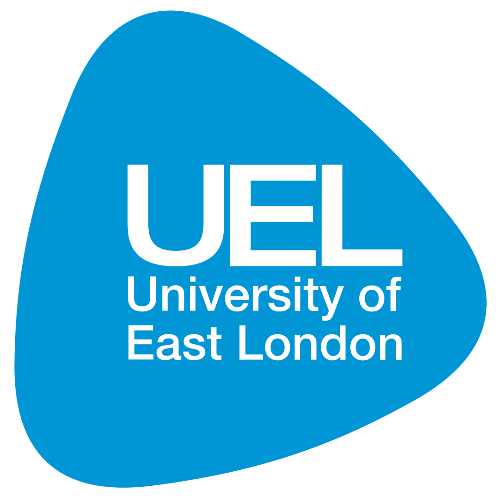







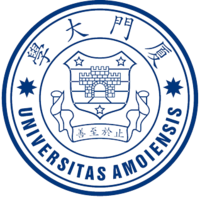

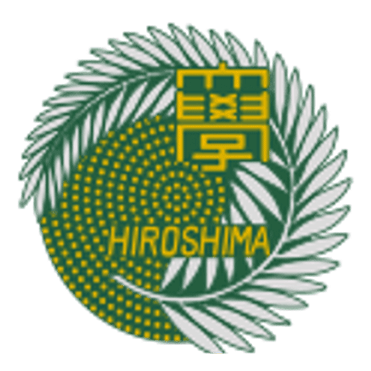
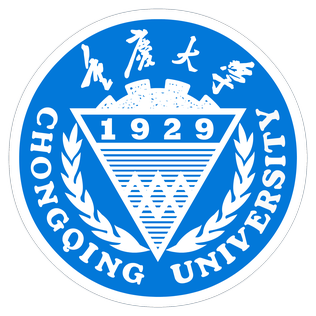
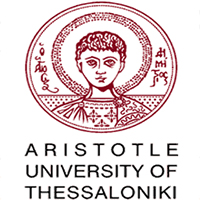
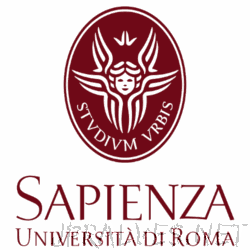
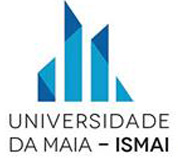


Faculty of Engineering and Architecture, University of Enna "KORE", Italy.
Subscribe to our newsletter
Join IEREK community